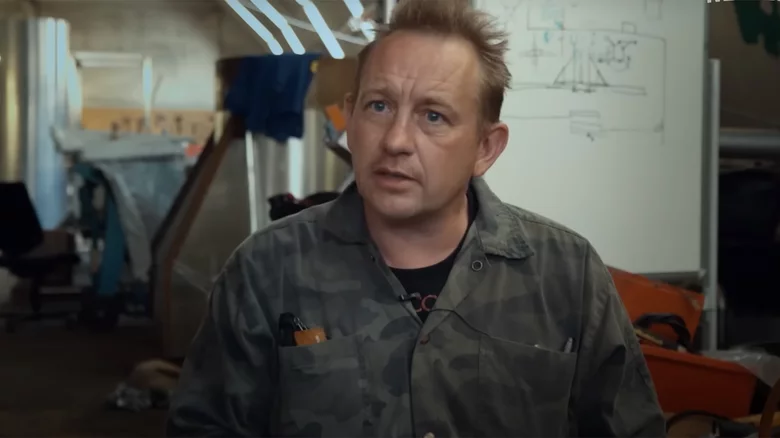We've all become accustomed to weak, poorly argued and half-ass opinions on the Internet. You see them on Facebook, Twitter, blogs and any site where people are allowed to vent.
I'm not talking about factually wrong statements, though there are plenty of those as well. I'm talking about writing that tries to make a point, but fails for lack of coherence, facts or organization. These are cases where the writer has simply failed to take the reader from Point A through Point B to the conclusion at Point C.
It's unfortunate, because these writers may actually have a good idea, but they just don't express it well.
It is one thing to see such muddled thinking around the amateurish corners of the Internet, but it is particularly troubling when it appears in the news pages of the authoritative New York Times.
Case in point is a recent NYT story on "fast furniture" that rambled on about solving a "problem," but never established what the problem was. Let's take a look how the story went awry:
The headline
The headline in the published paper was "'Fast Furniture' is Cheap, Stylish and Clogging American Landfills." Online, the headline was "‘Fast Furniture’ Is Cheap. And Americans Are Throwing It in the Trash / The mass-produced furniture that sold furiously during the pandemic could soon be clogging landfills."
Reading that, you might think the issue is obvious: Discarded furniture is either clogging landfills now or will "soon" be doing so. But the story actually doesn't say any thing like that.
A note for non-journalists: The headline of a story is not written by the writer of the story, but by an editor. While the editor tries to capture the essence of the story in the headline, every once in a while the editor gets it wrong. That's certainly what happened in this case.
The story
This story, by Debra Kamin, begins with a mostly factual report.
Americans bought piles of furniture during the pandemic, with sales on desks, chairs and patio equipment jumping by more than $4 billion from 2019 to 2021, according to a market data company. And a lot of it won’t survive the decade.
Fast furniture, which is mass-produced and relatively inexpensive, is easy to obtain and then abandon.
Kamen can't hide her disdain for this category of furniture. In the second paragraph, she says "fast furniture is for those looking to hook up but not settle down. It’s the one-season fling of furnishings." Then, the first source she quote piles on with more disdain:
Many of the Ikea beds and Wayfair desks bought during the Covid-19 lockdown were designed to last about five years, said Deana McDonagh, a professor of industrial design at the University of Illinois, Urbana-Champaign. “I relate to fast furniture like I do to fast food,” Ms. McDonagh said. “It’s empty of culture, and it’s not carrying any history with it.”
After Kamen quotes Ikea and Wayfair defending their products, she throws in some facts that lack context.
Each year, Americans throw out more than 12 million tons of furniture, creating mountains of solid waste that have grown 450 percent since 1960, according to the Environmental Protection Agency. Bits of tossed furniture can be recycled, but the vast majority ends up in landfills.
"Mountains of solid waste" sounds like a lot. But is it? In fact, 12 million tons is just 4% of all annual waste, but you won't find that in the story.
It is in the next paragraph that the really story starts to go off the rails:
“It’s quite a big problem, both spatially and also because of the way a lot of fast furniture is made now, it’s not just wood and metal. The materials don’t biodegrade or break down,” said Ashlee Piper, a sustainability expert and the author of “Give a Sh*t: Do Good. Live Better. Save the Planet.” “We’re creating this Leviathan problem at landfills with the furniture that we get rid of.”
Stop there. What is a "big problem" or a "Leviathan problem"? Discarded furniture is going to a landfill — so? Landfills are designed to handle all kinds of waste, and the U.S. has plenty of landfill space. The materials don't biodegrade -- well, ok, but again, so?
At this point in the story you would expect to find a quote from a landfill industry official saying they are overwhelmed with furniture waste. You also might expect a comment from a scientist explaining why it is significant that the furniture doesn't biodegrade. But there is none of either, anywhere in the story.
You remember how the headline used the word "clogging"? Kamen never uses that word in the story, nor does she ever indicate that this waste is too much for landfills to handle.
Kamin goes on to give some background on the furniture industry and the appeal of inexpensive furniture (hint: It's inexpensive). She quotes people who buy this product and also a man who makes his own furniture.
She says that some companies have "entered the market in the hopes of presenting a solution." Again, we're left wondering: A solution to what?
As I indicated at the top, maybe there really is a problem. But this story never says what it is. It never connects the dots. The New York Times should do better.


